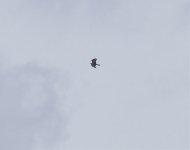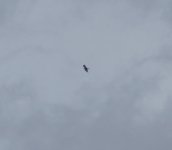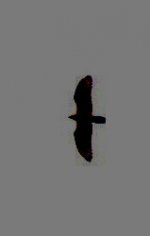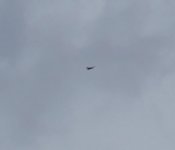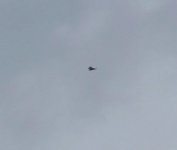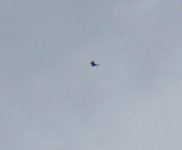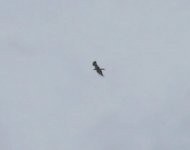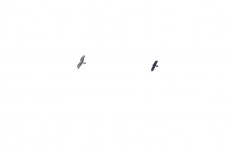Here are 2 more terrible, even ''more distant'' shots which imo show a fairly uncharacteristic CB shape?, deeply concaved forewing, projecting head, and long slim tail. Lou's comment regarding 2nd calendar year CB ie narrow wings, thus giving it a long tail impression I find baffling somewhat! Because that would mean (in all seriousness), having been surrounded by breeding CB for at least the last 5 years (SE England expansion)...and I've never seen an immature...really? I can recall seeing a party of 20+ CB's ''kettling'' around a local common a few Autumns ago, and guess what....they all had short tails :eek!:
The 3rd image relates to (which I'd forgotten about) a bird shot 6 minutes before the Buzzard appeared, another bad shot, not really conforming to a classic shape....but nevertheless interesting?
Cheers




